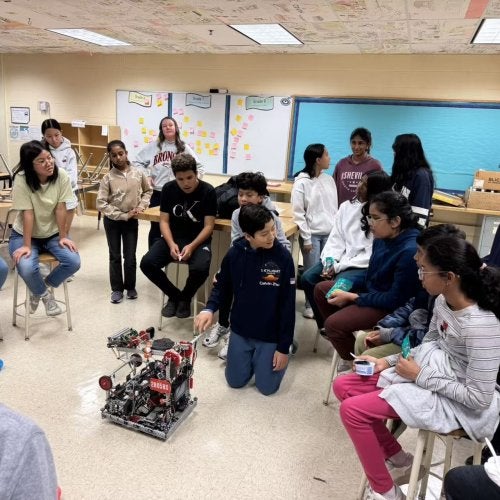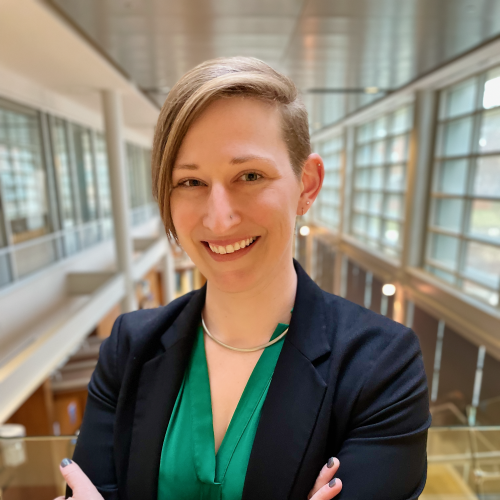
COLLEGE PARK, MD (August, 2016) Campbell F. Scribner is an assistant professor in the Department of Teaching, Learning, Policy and Leadership. He received a joint PhD in American History and Educational Policy Studies from the University of Wisconsin – Madison in 2013. A historian of education, with a focus on democratic governance and policy, his book The Fight for Local Control: Schools, Suburbs, and American Democracy was published in 2016.
[This interview has been edited and condensed.]
What does your book, The Fight for Local Control, cover?
The book looks at the problematic history of school districts in the United States. In some ways, school districts embody American democracy, especially through the participatory nature of Parent Teacher Associations (PTAs) and community school boards. On the other hand, district boundaries reinforce racial and economic stratification, undermining democratic ideals of equal educational opportunity. That paradox has made battles over local control of schools especially divisive in American politics.
The Fight for Local Control offers new perspectives on a range of issues, including racial desegregation, school choice, standardized testing, teachers’ unions, homeschooling, and school finance. The writing is as accessible for general readers, such as parents and school board members, as it is for academics.
What is the history of school districts in the US?
School districts in the US date back to the 19th century, but the right to local control in school districts wasn’t legally established until the 1970s, when political conservatives launched lawsuits to stop inter-district bussing programs for racial desegregation, as well as the redistribution of taxpayer money from richer to poorer school districts.
Unexpectedly, political conservatives based their case for local control on the legacy of the one-room school house. In the 1950s, many rural areas had only recently transformed into suburbs and still operated one-room schools. Conservatives invoked these vestiges of an earlier era to argue that all communities have the right to local control over schools. Judges accepted their logic, making the boundaries between cities and suburbs all but impassable.
How did school politics shift from conservatives arguing for local control to George W. Bush, a Republican president, launching the No Child Left Behind Act, which increased federal involvement in school policy?
That shift reflects a conflict of conservative values when it comes to control of school districts. As teachers’ unions have grown, limiting the power of school boards to restrain spending and choose curriculum, some conservatives have turned to state and federal accountability measures as a way to check them. For the same reason, many have turned to the market model of individual choice to weaken the grip of unions and other special interests over school policy. Both responses address some conservative concerns, but they are inimical to conservatives’ traditional calls for community control of schools.
When it comes to Common Core, who supports and opposes it politically-speaking?
For much of the twentieth century, liberals wanted more government intervention in school policy while conservatives refused. What changed, as early as the 1960s but definitely by the 1990s, is that one slice of the liberal coalition, civil-rights groups, asserted that schools were not teaching their kids effectively. From the conservative side, business interests argued that they needed skilled workers, which schools were not producing. These groups combined to push for more federal oversight of school policy, beginning with No Child Left Behind and continuing with Common Core. [Ed. note: The Common Core is a set of academic standards in mathematics and English language arts/literacy (ELA); the No Child Left Behind Act, signed into law in 2002, “effectively scaled up the federal role in holding schools accountable for student outcomes,” according to Education Week.]
The political divide on these policies is complex. On the liberal side, teachers’ unions are at odds with civil rights groups, while on the conservative side, small-government types disagree with big business. It is possible that those two groups can come together to torpedo Common Core, but highly unlikely.
I would point out that when people criticize Common Core, they often don’t know what they’re criticizing. For one thing, states voluntarily sign on to participate in Common Core; it is not a federal mandate. Also, teachers have been involved in crafting the Common Core standards, which are skill-based assessments, such as the ability to write a thesis statement, as opposed to dictating the content that must be taught. Conservatives see this as a step towards national standards, which might be the case. And critics may be right that there has been too much testing. As a general framework, however, Common Core isn’t going anywhere.
What do you see as the trajectory of charter schools versus public schools, in terms of growth and political support?
Many conservatives want parents to have the ability to make choices regarding schools, whether through charter schools or vouchers. They argue that school choice is intrinsically good, that everyone benefits from the freedom and efficiency of the market. Yet, for those who can afford it, “choice” usually means moving to good school districts in the suburbs. Allowing other students to exercise the same option would come at their expense. It is a zero-sum game. That is why proponents of “choice” limit their proposals to cities where schools are bad. They will not allow choice to extend such that city-based children attend schools in the suburbs. If “choice” is intrinsically good, it stands to reason that even suburban parents might want more options than local schools can offer, but so far it has been a profound double standard.
What are some takeaway messages from The Fight for Local Control?
Since the 1970s, political conservatives have stopped any meaningful chance for equal educational opportunity between districts. Having established “local control,” however, they have embraced school choice and federal oversight, both of which weaken local school boards. The effect has been to reinforce inequalities between districts while weakening participatory government within them, keeping the worst aspects of local control in place while forfeiting its virtues.
The Fight for Local Control is an even-handed book. I recognize the thorny questions and unsavory attitudes that local control can raise. Nevertheless, I hope that readers grasp the profound changes that have occurred in school politics over the last few decades. Schools were once the most accessible, responsive institutions in American government. If we support greater state and federal oversight, we need to recognize the inevitable cost to community participation.
-end-
For more information on the College of Education, visit: www.education.umd.edu
or contact
Audrey Hill, Associate Director of Communications, at: audreyh@umd.edu



